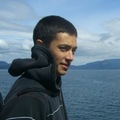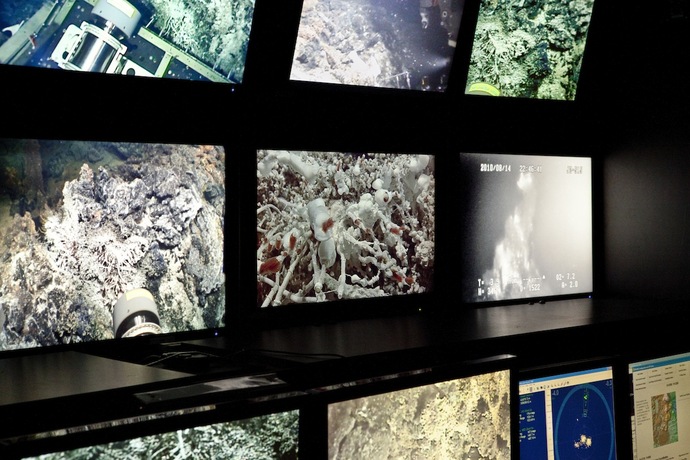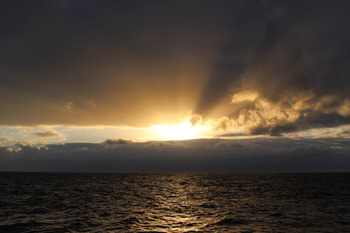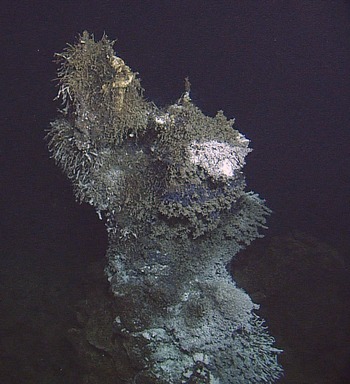Science Update
The past 24 hours have been busy aboard the R/V Thompson and we have been fortunate to have the weather finally cooperating with us. We launched Jason last night at 2000 h for dive J2-515 in the southeastern region of the Axial Seamount Caldera. The goals of J2-515, which will last for ~50 hours, are to:
1) Conduct RESON and photomosaic surveys of CASTLE and the International District hydrothermal vent fields,
2) Conduct a reconnaissance survey for the primary node site PN1B (which will be one of two primary nodes of the Regional Scale Nodes component of the NSF funded Ocean Observatories Initiative),
3) Conduct a RESON survey of the cable route that would connect the primary node to a secondary node if one is placed at ASHES hydrothermal vent field, and
4) Conduct a highly detailed survey of ASHES to examine two of the large sulfide structures we identified during J2-514.
We are currently surveying El Guapo, a ~15 m-tall, 339° active hydrothermal vent within the International District and one of the many sulfide structures that we’ve seen in the past 24 hours. The Jason control van has been crowded all day with people anxious to catch glimpses of active hydrothermal vents and the impressive biota that thrives in the harsh environments surrounding the vents.
Impression
Yesterday, we posted impressions from students who have been aboard the Thompson for the second leg of Enlighten ’10. Likhi Ondov, an undergraduate at UW, has had the opportunity to take part in both legs of this expedition and has been conducting some impressive research using the ship’s flow cytometer. Below are some of Likhi’s impressions of his three weeks on the ship thus far:
 |
Ever since my junior year as an electrical engineering student, I tend to ask myself after hours glaring at a less-than-optimal circuit simulation, “When did it become 4 am?” In a constant battle to stay on top of demanding coursework, time seems to become a blur. In effect, knowing the time has morphed from integers and angles denoting the time of day and suggesting cycles of light and dark, to merely answering the question “Have I invested enough effort into this?” During mid-quarter, I would often find myself exiting UW's Electrical Engineering amid darkness and chirping birds, my mind focused on a project, upcoming deadlines, and considering a just-finished homework set. It just so happened that leaving that building near dawn was a consequence of my determination and workload. I find myself in a similar situation aboard the R/V TGT. From the moment I awake in a dark stateroom to the minute I exit a darkened, windowless “van” (furnished shipping container), the sun may have set and risen but time of day is irrelevant; rather, it gives significance to the effort invested into a past endeavor.
Onboard the TGT, working the 4 am-8 pm and 4 pm-8 pm Jason watches and working on my own project share similar qualities to my electrical engineering student experiences. The day consists of self-defined deadlines: finish code to make plot depth profiles, collect water samples from the rosette, run samples through the cytometer, make a plankton-specific depth profile, fix broken code... only interrupted by scheduled times in the Jason control van and meal times. It is inevitable that I complete my work at what might be considered “odd” hours. At all transitions, it's less important to think “it's 2 am, I normally sleep” but rather consider “I am flexible, and should dedicate three hours of work now because it needs to get done.” Six or eight hours of sleep is easy to find in some other random time slot.
- Likhi Ondov, UW undergraduate student




